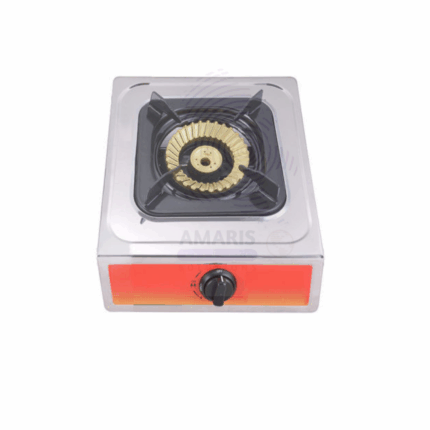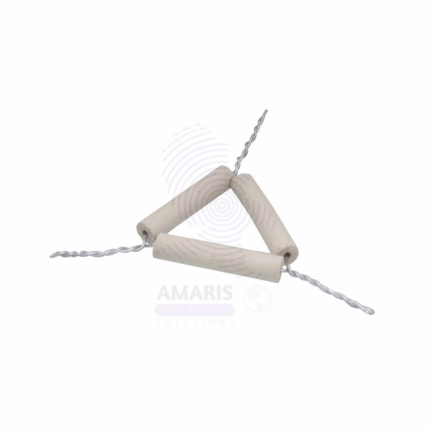“PIPE CLAY TRIANGLES” has been added to your cart. View cart
Gas Stove Portable
$ 34.99 Original price was: $ 34.99.$ 34.83Current price is: $ 34.83.
Whatsapp Order
Gas Stove Portable is a compact, lightweight stove designed for easy transport and use in various settings, including laboratories, fieldwork, and outdoor cooking. It operates on portable gas cartridges or cylinders, providing a reliable flame source for heating, boiling, or sterilization purposes. Constructed with durable materials and equipped with safety features such as flame control and automatic shut-off valves, this stove offers convenience and efficiency. Its portability and user-friendly design make it ideal for temporary setups and situations where traditional fixed stoves are impractical.
Description
Table of Contents
Toggle
Gas Stove Portable
Primary Uses
- Laboratory and Field Heating Applications
- Providing a portable heat source for sterilization of instruments and glassware.
- Heating chemical reagents and solutions during experiments requiring controlled temperatures.
- Supporting field research by enabling on-site sample preparation or sterilization.
- Used in microbiology and chemistry labs for flame-based techniques such as flame tests.
Secondary Uses
- Outdoor and Emergency Applications
- Suitable for camping, picnics, and outdoor cooking where portability is essential.
- Useful in emergency situations for heating and cooking when conventional sources are unavailable.
- Can be employed in small-scale food preparation in temporary or mobile kitchens.
KEY PRODUCT FEATURES
1.Basic Identification Attributes
- Fuel Type: Portable gas cartridges or cylinders (butane, propane)
- Construction: Durable metal frame with flame control knob
- Size: Compact and lightweight for easy transport and storage
2.Physical & Chemical Properties
- Flame temperature adjustable for precise heating control
- Resistant to corrosion and heat during use
3.Safety & Hazard Attributes
- Equipped with flame control and safety shut-off mechanisms
- Must be used in well-ventilated areas to avoid gas buildup
- Risk of burns and fire if mishandled
4.Storage & Handling Attributes
- Store gas cartridges separately in a cool, ventilated area away from flames
- Inspect connections and valves before each use
- Keep away from direct sunlight and heat sources
5.Regulatory & Compliance Attributes
- Complies with safety standards for portable gas appliances
- Suitable for use in laboratory and outdoor environments
6.Environmental & Health Impact
- Uses clean-burning fuel with minimal smoke and emissions
- Proper disposal of gas cartridges required to minimize environmental impact
SAFETY HANDLING PRECAUTIONS
Safety Handling Precautions
- Use in ventilated areas and avoid inhalation of fumes
- Keep flammable materials away during operation
- Follow manufacturer’s instructions for safe use and maintenance
First Aid Measures
- In case of burns, cool affected area and seek medical attention if necessary
- For inhalation of gas fumes, move to fresh air immediately and get medical help if symptoms persist
Firefighting Measures
- Use dry chemical, CO₂, or foam extinguishers for gas fires
- Do not use water on gas fires
Related products
Deflagrating Spoon
The Deflagrating Spoon is a laboratory tool used to heat small quantities of substances in open flame, commonly for combustion and deflagration experiments. It features a small bowl attached to a long metal handle, typically made of stainless steel or heat-resistant alloy. Its design allows safe handling of reactive materials during high-temperature reactions. It is widely used in laboratory and industrial applications involving combustion demonstrations and chemical testing.
Gas Burner Portable
Gas Burner Portable is a compact, lightweight burner designed specifically for laboratory and field applications requiring a reliable heat source. Typically fueled by LPG or butane gas, it provides a clean, adjustable flame suitable for heating, sterilization, and combustion tasks. Constructed from durable materials with heat-resistant finishes, this burner features safety valves and flame controls for precise operation. Its portability allows for easy transport and use in diverse environments, including classrooms, research sites, and outdoor experiments.
laboratory electric water bath
The Laboratory Electric Water Bath is a precision temperature-controlled apparatus used in laboratories to incubate samples in water at consistent temperatures. It features an electrically heated water reservoir with adjustable temperature settings, digital or analog controls, and safety features such as over-temperature protection. This device is essential for applications requiring uniform heating, such as incubation, warming reagents, melting solids, or enzymatic reactions. Constructed with corrosion-resistant materials and insulated housing, it provides stable temperature conditions for a wide range of laboratory procedures in chemical, biological, pharmaceutical, and industrial settings.
OVEN ELECTRICAL
An Electrical Oven is a laboratory apparatus designed to provide controlled heating for drying, sterilizing, and heat-treating samples or equipment. Using electrically powered heating elements, the oven offers precise temperature regulation and uniform heat distribution within its insulated chamber. Electrical ovens are essential in chemical, biological, and industrial laboratories for applications such as drying glassware, curing materials, sterilizing instruments, and conducting thermal experiments. Constructed with durable materials and safety features, they ensure reliable and safe operation under various laboratory conditions.
PIPE CLAY TRIANGLES
Pipe Clay Triangles are heat-resistant supports used in laboratory setups to hold crucibles over a Bunsen burner or other heat sources. They consist of three lengths of ceramic (pipe clay) tubing threaded over a triangular metal wire frame, typically made of galvanized iron or nickel-chromium alloy. These ceramic-coated wires provide stable and high-temperature-resistant platforms, allowing crucibles to be heated directly during ashing, calcination, or other high-temperature experiments. Widely used in chemistry labs and educational institutions, they are essential components for supporting small containers while minimizing heat transfer loss or instability.


 Preservatives(food)
Preservatives(food) Flavor Enhancers
Flavor Enhancers Acidulants
Acidulants Sweeteners
Sweeteners Antioxidants
Antioxidants Colorants(food)
Colorants(food) Nutraceutical Ingredients (food)
Nutraceutical Ingredients (food) Nutrient Supplements
Nutrient Supplements Emulsifiers
Emulsifiers
 Collectors
Collectors Dust Suppressants
Dust Suppressants Explosives and Blasting Agents
Explosives and Blasting Agents Flocculants and Coagulants
Flocculants and Coagulants Frothers
Frothers Leaching Agents
Leaching Agents pH Modifiers
pH Modifiers Precious Metal Extraction Agents
Precious Metal Extraction Agents
 Antioxidants(plastic)
Antioxidants(plastic) Colorants (Pigments, Dyes)
Colorants (Pigments, Dyes) Fillers and Reinforcements
Fillers and Reinforcements Flame Retardants
Flame Retardants Monomers
Monomers Plasticizers
Plasticizers Polymerization Initiators
Polymerization Initiators Stabilizers (UV, Heat)
Stabilizers (UV, Heat)
 Antifoaming Agents
Antifoaming Agents Chelating Agents
Chelating Agents Coagulants and Flocculants
Coagulants and Flocculants Corrosion Inhibitors
Corrosion Inhibitors Disinfectants and Biocides
Disinfectants and Biocides Oxidizing Agents
Oxidizing Agents pH Adjusters
pH Adjusters Scale Inhibitors( water)
Scale Inhibitors( water)
 Antioxidants(cosmetic)
Antioxidants(cosmetic) Emollients
Emollients Fragrances and Essential Oils
Fragrances and Essential Oils Humectants
Humectants Preservatives
Preservatives Surfactants(cosmetic)
Surfactants(cosmetic) Thickeners
Thickeners UV Filters
UV Filters
 Fertilizers
Fertilizers Soil Conditioners
Soil Conditioners Plant Growth Regulators
Plant Growth Regulators Animal Feed Additives
Animal Feed Additives Biostimulants
Biostimulants Pesticides (Herbicides, Insecticides, Fungicides)
Pesticides (Herbicides, Insecticides, Fungicides)
 Active Pharmaceutical Ingredients (APIs)
Active Pharmaceutical Ingredients (APIs) Excipients
Excipients Solvents(pharmaceutical)
Solvents(pharmaceutical) Antibiotics
Antibiotics Antiseptics and Disinfectants
Antiseptics and Disinfectants Vaccine Adjuvants
Vaccine Adjuvants Nutraceutical Ingredients (pharmaceutical)
Nutraceutical Ingredients (pharmaceutical) Analgesics & Antipyretics
Analgesics & Antipyretics
 Analytical Reagents
Analytical Reagents Solvents(lab)
Solvents(lab) Chromatography Chemicals
Chromatography Chemicals Spectroscopy Reagents
Spectroscopy Reagents microbiology-and-cell-culture-reagents
microbiology-and-cell-culture-reagents Molecular Biology Reagents
Molecular Biology Reagents Biochemical Reagents
Biochemical Reagents Inorganic and Organic Standards
Inorganic and Organic Standards Laboratory Safety Chemicals
Laboratory Safety Chemicals Specialty Laboratory Chemicals(Special Laboratory Equipment)
Specialty Laboratory Chemicals(Special Laboratory Equipment)
 Demulsifiers
Demulsifiers Hydraulic Fracturing Fluids
Hydraulic Fracturing Fluids Scale Inhibitors(oil)
Scale Inhibitors(oil) Surfactants(oil)
Surfactants(oil) Drilling Fluids
Drilling Fluids
 Dyes and Pigments
Dyes and Pigments Bleaching Agents
Bleaching Agents Softening Agents
Softening Agents Finishing Agents
Finishing Agents Antistatic Agents
Antistatic Agents
 Admixtures
Admixtures Waterproofing Agents
Waterproofing Agents Sealants and Adhesives
Sealants and Adhesives Curing Compounds
Curing Compounds Concrete Repair Chemicals
Concrete Repair Chemicals Anti-Corrosion Coatings
Anti-Corrosion Coatings
 Surfactants(cleaning)
Surfactants(cleaning) Builders
Builders Enzymes
Enzymes Solvents (Cleaning)
Solvents (Cleaning) Fragrances
Fragrances
 Electronic Chemicals
Electronic Chemicals Catalysts
Catalysts Lubricants
Lubricants Photographic Chemicals
Photographic Chemicals Refrigerants
Refrigerants Automotive chemicals
Automotive chemicals Pyrotechnic Chemicals
Pyrotechnic Chemicals
 Biodegradable Surfactants
Biodegradable Surfactants Bio-based Solvents
Bio-based Solvents Renewable Polymers
Renewable Polymers Carbon Capture Chemicals
Carbon Capture Chemicals Wastewater Treatment Chemicals
Wastewater Treatment Chemicals
 Pigments
Pigments Solvents(paint)
Solvents(paint) Specialty Coatings
Specialty Coatings Binders/Resins
Binders/Resins Additives
Additives Driers
Driers Anti-Corrosion Agents
Anti-Corrosion Agents Functional Coatings
Functional Coatings Application-Specific Coatings
Application-Specific Coatings
 Fresh Herbs
Fresh Herbs Ground Spices
Ground Spices Whole Spices
Whole Spices Spice Blends
Spice Blends Dried Herbs
Dried Herbs
 Leavening Agents
Leavening Agents Dough Conditioners
Dough Conditioners Flour Treatments
Flour Treatments Fat Replacers
Fat Replacers Decoratives
Decoratives Preservatives(baking)
Preservatives(baking)
 Plasticizers & Softeners
Plasticizers & Softeners Reinforcing Agents
Reinforcing Agents Adhesion Promoters
Adhesion Promoters Vulcanizing Agents
Vulcanizing Agents Antidegradants
Antidegradants Blowing Agents
Blowing Agents Fillers & Extenders
Fillers & Extenders Accelerators & Retarders
Accelerators & Retarders





















